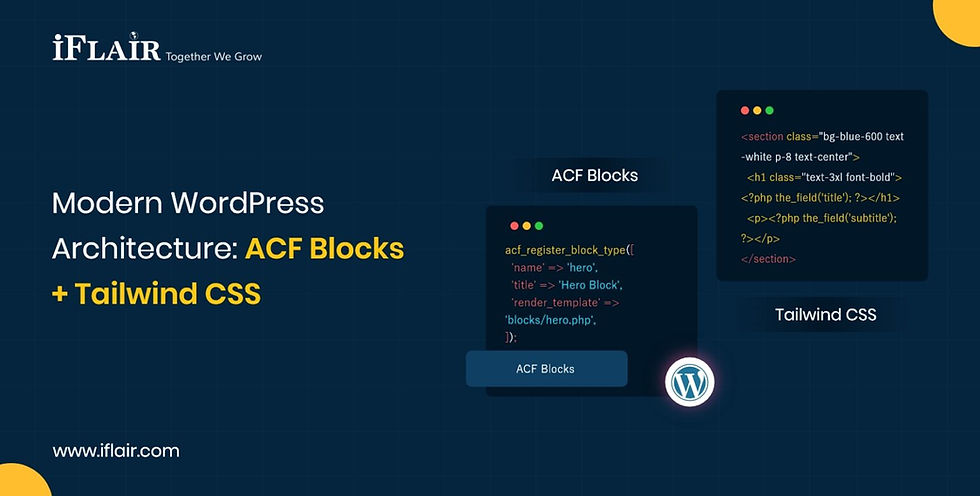Modern WordPress Architecture: ACF Blocks + Tailwind CSS
- angelnr0303
- Jul 3
- 1 min read

ACF Blocks for Scalable WordPress Development
The use of utility-first, component-driven approaches is growing in popularity in contemporary web development. When working with WordPress, developers usually want performance and flexibility without sacrificing maintainability. This is when Tailwind CSS and ACF Blocks come in handy. With the help of ACF Blocks, a powerful plugin for WordPress custom field generation, and Tailwind CSS, a utility-first CSS framework, developers can create fast, flexible, and scalable websites without the need for bloated themes or page builders.
For a business WordPress development company trying to provide unique, high-performing solutions that satisfy intricate client requirements, this strategy is extremely advantageous. While ACF Blocks enable reusable, component-based architecture that improves maintainability and content management, Tailwind CSS guarantees consistent design with little overhead. Additionally, because it eliminates superfluous clutter and permits precisely calibrated performance enhancements suited to the unique needs of enterprise-level websites, this stack is ideal for a concentration on WordPress speed optimization services.
What is Tailwind CSS + ACF Blocks?
Tailwind CSS
You can create unique designs right in your markup using Tailwind CSS, a utility-first CSS framework. Applying pre-defined utility classes to HTML components gives you complete control over spacing, layout, font, colors, and more, all with exceptional performance and responsiveness, as opposed to coding your own CSS.
ACF Blocks
With the Advanced Custom Fields plugin, you may register custom Gutenberg blocks from PHP using ACF Blocks. Normally, you can use PHP templates to construct ACF Blocks that render, but you can also use React (the Gutenberg underlying framework) to create the editor user interface for the block.



Comments